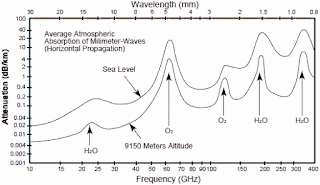Why Starlink VLEO?
Why is Starlink pushing for adoption of V-Band for the next generation of Starlink, even before it proved that it can be a sustainable business as it stands?
Starlink brought several innovations (highly optimized satellite stacking for fully utilize F9 capability, flat design, orbit release mechanism), but its most important innovation was low-cost phased array design for user terminals, which is order of magnitude more cost effective than competition (u8 from Kymeta).
Why are they aiming for VLEO constellation? It can stand for Very Low Earth Orbit constellation. Or it can mean V-Band Low Earth Orbit constellation (or both). But V-Band will require major advancements in electronics, which also leads to high cost for early adoption. Since V-band will significantly increase electronics cost on both space and ground segment, why is SpaceX pushing for it?
One reason is frequency grab. Other competitors, with long experience in the field, have really pushed to allocate priority rights in Ku and Ka band, which could make them long term threat to Starlink expansion. OneWeb has priority rights in Ku band that SpaceX uses. Telesat has priority rights in major parts of Ka-band spectrum. If Starlink is successful, value of their priority rights might rise significantly.
What really surprised me is the fact that SpaceX wants to position VLEO constellation really low. So low that it would probably take less than a year for Starlink satellite to dip into the atmosphere without additional propulsion. Despite large cost decreases in launch capacity and satellite manufacturing, space segment still represents at least 50% of the cost, leading to multi-billion investment just to establish the initial (550km) constellation. Why would SpaceX risk a design that requires at least a billion sustained investment every year? Ok, that would provide long term requirement for sustained replacement Starship launches, but there must be more to that.
One possibility is latency. Going from 550 km to 340 km would reduce round trip latency for 3ms. Is it nice improvement? Yes. Is it that worthwhile? Probably not.
Then there are lower power requirements. Signal power density would improve 2.5 times. That can lead to smaller antennas or more bits per Hz. Or lower total radiated power. Again, nice improvement, but not a major gain.
But then we come to phased array antennas. Going from 550 km to 340 km leads to smaller beam spot size. Given 1.5 degree beam width, beam spot area is halved. Which translates to doubling the subscriber density. Now that is one parameter that is important to SpaceX for future growth.
Why combine the V-Band with VLEO orbit? Well, the signal atmospheric attenuation is almost tenfold higher which is compensated with smaller beams. There is also "more frequency space" in V-band, in which SpaceX requested access to almost 12GHz of spectrum (37.5-52GHz).
The major reason here is the fact the higher frequency means shorter wavelength. Since the minimal size of phased array antennas is limited by that wavelength, going from Ku-band (10 GHz) to V-band 40 GHz leads to four times decrease in antenna dimensions. Which leads to 16 times reduction in antenna surface area.
If you take a look at existing Starlink phased array antennas, they pack four of such antennas on a single satellite, with an option to pack four more (total of eight Ku/Ka band antennas). But if you can pack sixteen times more? That is 128 antennas. Leading to 128 continuously maintained spot beams. That would be a huge capacity improvement per Starlink satellite. Even if they use just 1GHz per beam and 4bits per Hz, that leads to 30 Tbps capacity in a single launch. Ten times more than complete Viasat-3 constellation capacity. Three times more than mPOWER constellation capacity. Twice the complete Telesat LEO constellation. In a single launch of F9. Wider frequency band enables overlapping of multiple beam spots from different satellites, making it easier to increase subscriber density where it is needed. Combining smaller spot sizes and wider frequency bands, Starlink could reach over 100 subscribers/km2 metrics with 100Mbps bandwidth. That way it would become cost competitive even in smaller towns and sub-urban areas.
Why is it significant? Just looking at the USA, rural population represents 14% of the population, but suburban areas have over half of the population. In just a decade Starlink could become cost effective alternative for two thirds of the US population alone.
So VLEO has potential to quadruple addressable market size for Starlink, making it major competitor to all telecommunication companies. Just for comparison, Comcast had 27 million subscribers and 109 billion revenue in 2019. Focused on USA alone. But Comcast cannot leverage their infrastructure investment all over the world, while Starlink can. In addition, any fixed infrastructure competitor will have similar "last-mile" cost which is proportional to the number of subscribers. Starlink has much lower "last-mile" costs, which boils down to the cost of user terminal. But to be to compete with standard ISPs in suburban areas, Starlink has to expand their network capacity per area orders of magnitude (lets call it bandwidth density). And that is what VLEO represents. 32 times improvement in capacity of a single satellite. And 26 times increase in planned VLEO satellites (37500 VLEO satellites as announced to FCC). That is nearly tree orders of magnitude increase of capacity.




Comments
Post a Comment